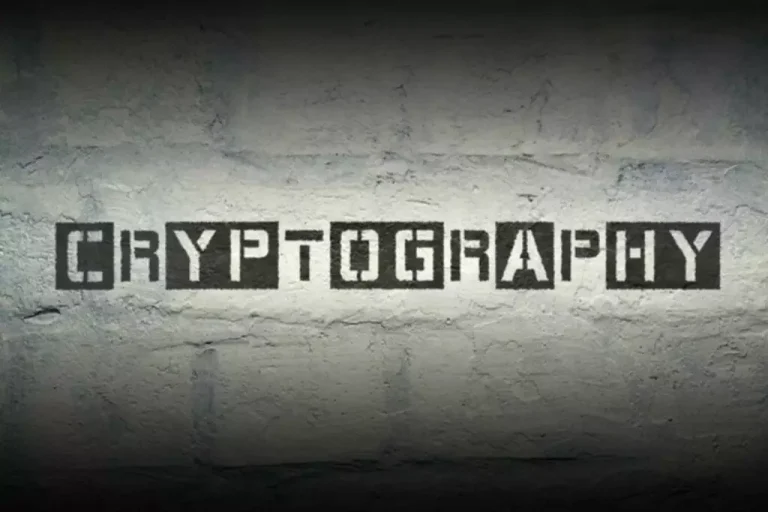In trade on your contribution to the pool, you’ll receive liquidity tokens representing your share of the reserve. Balancer makes use of good contract-based algorithms to take care of the stability and desired ratio of property within the liquidity pool. The protocol provides customers the opportunity to not solely trade tokens but in addition spend money on liquidity swimming pools, as properly as create their very own to profit from trades. There has by no means been a better time for individuals thinking about exploring and collaborating in liquidity pools.

To do this, they lock two tokens at equal value in a protocol for a sure time period. For their contribution, LPs earn trading fees proportional to their share of their equipped liquidity or specific LP tokens. Smart contracts enable the creation of decentralized protocols that routinely manage the deposit, withdrawal, and pricing of belongings in liquidity swimming pools. However, the consumer nonetheless should select property, platforms, and pools, and assess risks earlier than providing liquidity. These are decentralized protocols that simplify the creation and functioning of liquidity pools in the context of decentralized finance (DeFi) platforms. AMMs employ mathematical algorithms to mechanically execute trades between a number of assets by guaranteeing that there is a balance between the provision of tokens within the liquidity pool.
Liquidity Mining And Incentives
A DEX, however, must perform with none intervention of third events or intermediaries. Therefore, the standard order-matching system would fail in relation to trading an illiquid buying and selling token. While it might still be made to work, order-matching becomes a challenge when the trading volume is very low, which is attribute of new and niche cryptocurrency initiatives.
Users have full management over their property and may transact on a DEX instantly from their wallets. The TVL of various liquidity pools can differ tremendously, with some pools reaching lots of of hundreds of thousands or even billions of dollars in value. Liquidity swimming pools, used in AMMs, remove the need for an order e-book and an middleman. Rather than relying on a direct counterparty like in CEXs, trades on AMM are executed in opposition to the crypto market liquidity within the pool.
For builders, liquidity swimming pools present a method to create decentralized liquidity, enabling any dApp that requires it. When DEXs were first invented, they encountered liquidity problems as they tried to imitate conventional market makers. Decentralized exchanges (DEXs) use liquidity swimming pools in order that merchants can swap between different belongings within the pool. Uniswap is certainly one of the hottest decentralized exchanges that employs liquidity swimming pools on the Ethereum community. It permits users to trade ERC-20 tokens directly from their wallets with out the need for an intermediary. In a commerce, traders or buyers can encounter a distinction between the anticipated worth and the executed price.
Protocol & Token Support
Its most popular implementation is commonly inside AMM DEXs which permit customers to change the tokens they possess for the ones they want from the pool. Liquidity pools, therefore, remove https://www.xcritical.com/ the need for centralized market makers and order books on DeFi trade platforms. It’s essential to notice that while LP tokens have the potential to earn returns, additionally they expose the holder to certain dangers.
As of November 2023, the Balancer protocol has more than 103,000 liquidity providers and almost 6,000 whole swimming pools. The user’s profit depends on a quantity of elements, such as trading quantity, volatility of property in the pool, worth changes, and so forth. One of the cornerstones of DeFi is liquidity pool provision or liquidity pooling. In the state of affairs when an investor carefully assesses the potential risks and finds a well-structured strategy, it’s possible to realize a decent yield. Interoperability and cross-chain liquidity are pivotal future developments in crypto, yet additionally they current vital challenges. With the proliferation of numerous blockchain networks, enabling seamless communication and transfer of belongings across chains turns into imperative.

However, slippage, the difference between the anticipated and precise execution worth, can influence trades on these decentralized exchanges. High slippage arises when liquidity is limited, resulting in potential losses or lowered positive aspects for traders. Understanding slippage and actively managing liquidity swimming pools are essential for optimizing trading strategies on constant product platforms. Market volatility can lead to impermanent Loss, the place the value of assets in a liquidity pool fluctuates in comparison with holding them outside.
Transactions Per Second (tps)
Liquidity swimming pools themselves are made up of funds contributed by customers and assist provide liquidity to varied decentralized exchanges. Keeping up with what’s taking place within the financial markets is a big deal for liquidity providers, particularly within the wild world of decentralized finance (DeFi) and traditional trading setups. In return for his or her contribution, liquidity providers are usually rewarded with transaction charges and different incentives, such as yield farming rewards or governance tokens. These incentives goal to draw and retain liquidity providers, encouraging their continued participation in the liquidity provision process.

Such openness fosters a more inclusive and equitable financial system the place anybody can own a stake in the market and energy decentralized buying and selling exercise. Fees are distributed based on the proportion of liquidity that every supplier has contributed to the pool. The extra liquidity a supplier contributes, the larger the proportion of the charges they obtain. Bancor launched an answer to the impermanent loss drawback by using an innovative v2 pool, which uses Chainlink oracles to take care of the balance of property in the pool.
Sushiswap
These pools have vital implications for the financial ecosystem, bringing forth numerous advantages and opportunities for individuals. This aggregation of liquidity enhances market depth, ensuring adequate funds can be found to facilitate trades and cut back worth slippage. Additionally, Liquidity Pools promote market efficiency by eliminating order book limitations. Instead of relying solely on order matching, members can trade instantly from the pooled liquidity. The constant product method, exemplified by platforms like Uniswap, revolutionizes worth discovery and pool balance maintenance. This algorithmic strategy ensures a continuous product of reserves in a liquidity pool, allowing for environment friendly trading without counting on centralized intermediaries.

Yes, similar to any system or platform, DeFi protocols are susceptible to hacks and security breaches. On July 30, 2023, unknown attackers exploited a vulnerability within the smart contract code and stole over $50 million in cryptocurrency from the platform. One of crucial metrics for liquidity swimming pools is Total Value Locked (TVL), which refers defi liquidity pools to the whole quantity of belongings locked in a contract. AMMs dynamically regulate the prices of property based mostly on supply and demand, ensuring that the pool maintains a balanced allocation of the 2 tokens.
Top Sources For Liquidity Swimming Pools Data
Moreover, liquidity swimming pools have opened up new avenues for individuals to generate passive earnings. Users can earn charges and rewards proportional to their contributions by depositing their assets into these pools. This incentive mechanism not solely encourages users to take part but additionally aligns their pursuits with the expansion and success of the protocols. This symbiotic relationship between users and DeFi platforms has created a self-sustaining ecosystem that continues to increase. Yield Farming Platforms — have emerged as a popular development in DeFi, permitting customers to earn passive income by lending or providing liquidity to various protocols.
What Are Liquidity Pool Tokens (LP Tokens)? Definition & Use Case – Techopedia
What Are Liquidity Pool Tokens (LP Tokens)? Definition & Use Case.
Posted: Sat, 21 Oct 2023 07:00:00 GMT [source]
By eliminating the need for traditional order books, Bancor provides efficient and safe token swaps whereas maintaining low slippage and price stability. Its intuitive interface and seamless integration make it a popular selection among customers, empowering them with easy accessibility to decentralized liquidity swimming pools and fostering vibrant token ecosystems. Curve Finance is a liquidity protocol constructed on Ethereum that optimizes stablecoin buying and selling.
Tips On How To Invest In Liquidity Pools On Notum
In this article, we’ll look at what liquidity swimming pools are, why they’re essential in DeFi, and how they ensure prices are balanced without human intervention. Decentralized finance (DeFi) makes it attainable for anyone with an internet connection to entry many of the same financial providers that traditional banks provide. To participate in a crypto liquidity pool, you will first must have a good understanding of how these swimming pools work. Once you’re acquainted with the idea, you probably can begin by choosing a reputable and broadly used platform such as Uniswap or Sushi. Liquidity pools have also opened the door for tranching, a concept borrowed from traditional finance. Tranching includes dividing financial products based on their risks and returns.
The quantity being funded (or locked up) have to be equal value amounts of both tokens. Traditional exchanges often use an “order book” where, for every buyer, there should exist a seller and vice versa. Transactions per second, also called ‘tps’, measures the variety of transactions a network can execute in a single second. Paper hands is a time period describing people who lack the conviction to carry on to their cryptocurrencies. Gives pool creators the flexibleness to dynamically change parameters such as fees and weights. Specialized on stablecoins; usually makes use of minimal fees and slippage to maintain fixed values.
Liminal isn’t liable for lack of funds, data, or enterprise disruptions arising out of consumer negligence or normal course of business. Users should safe their belongings and acknowledge inherent risks, similar to technical points, evolving regulations, third-party hacks and market volatility. While in the pools, the worth of the liquidity is maintained by algorithms based mostly on the provision and demand created via trading activity.
